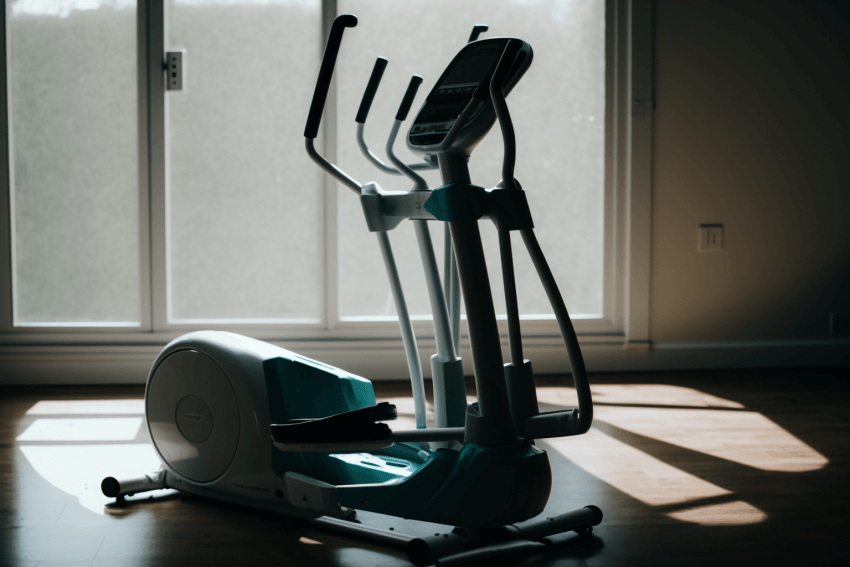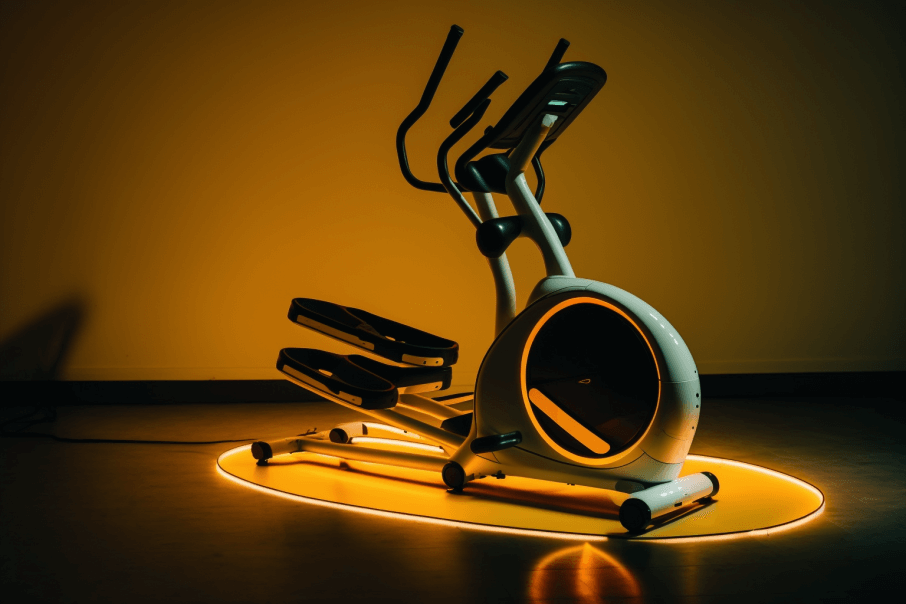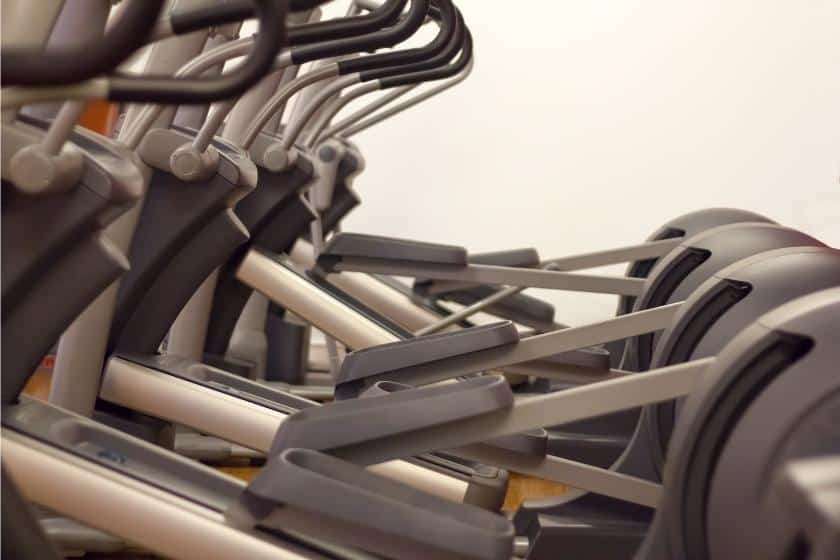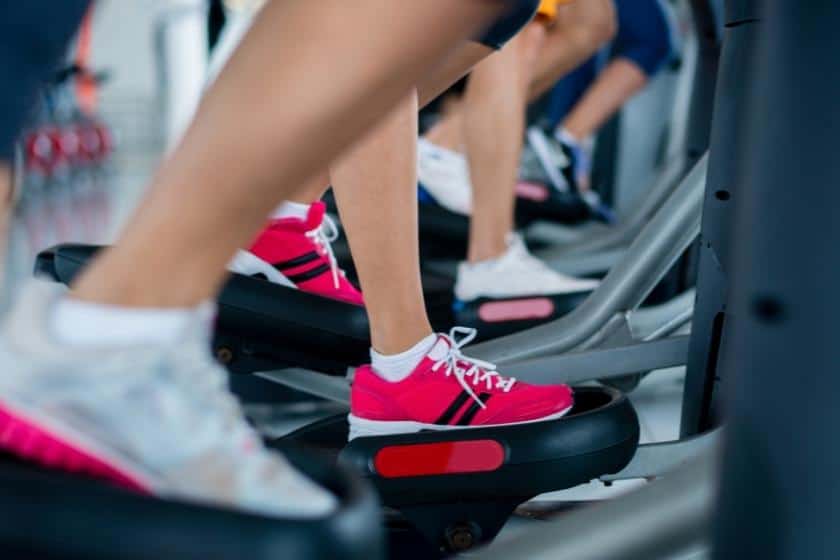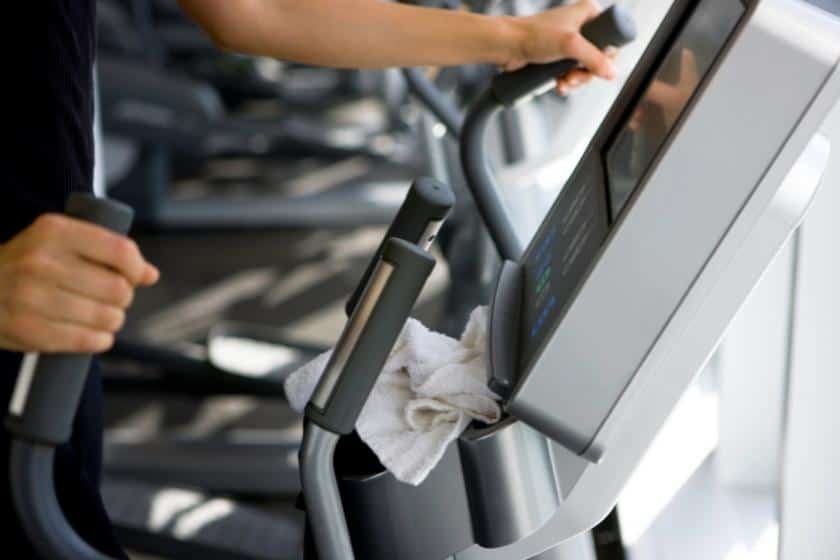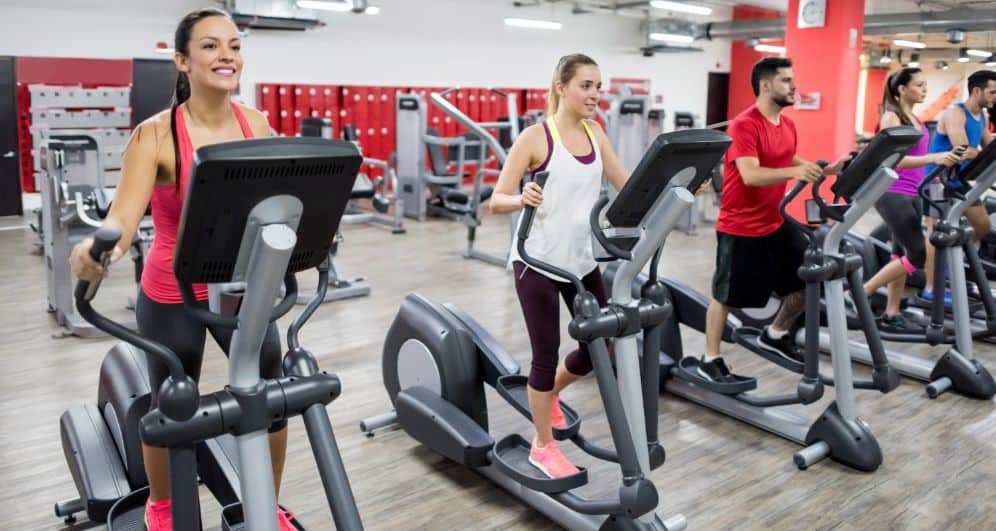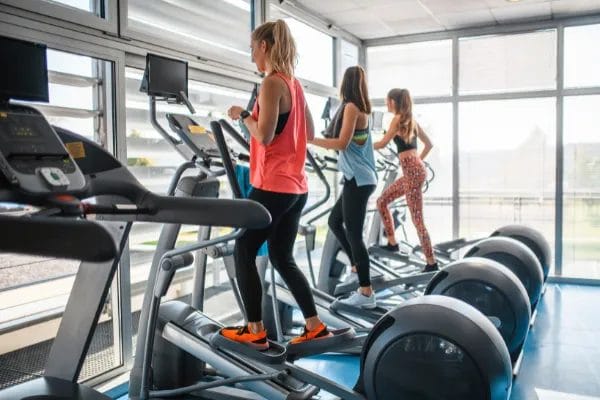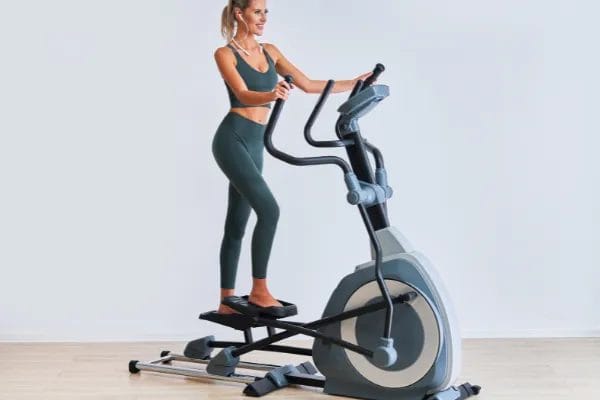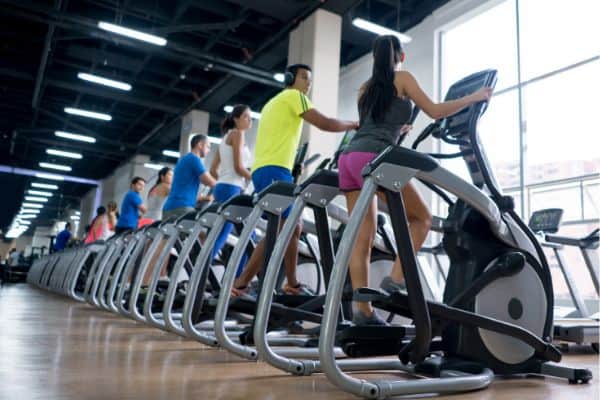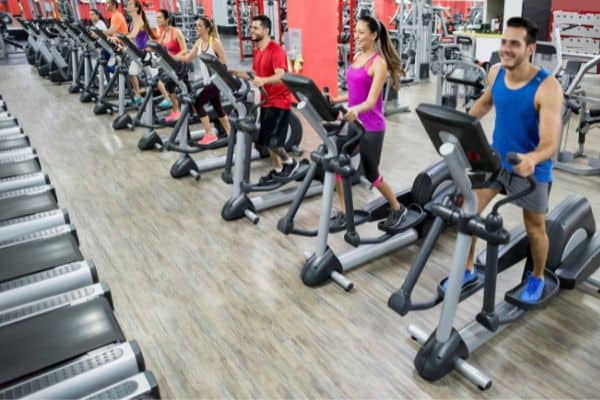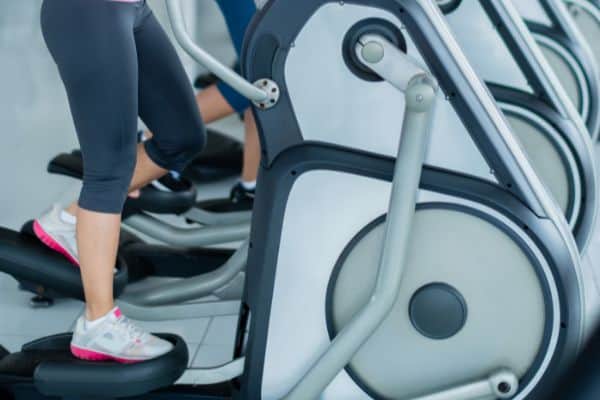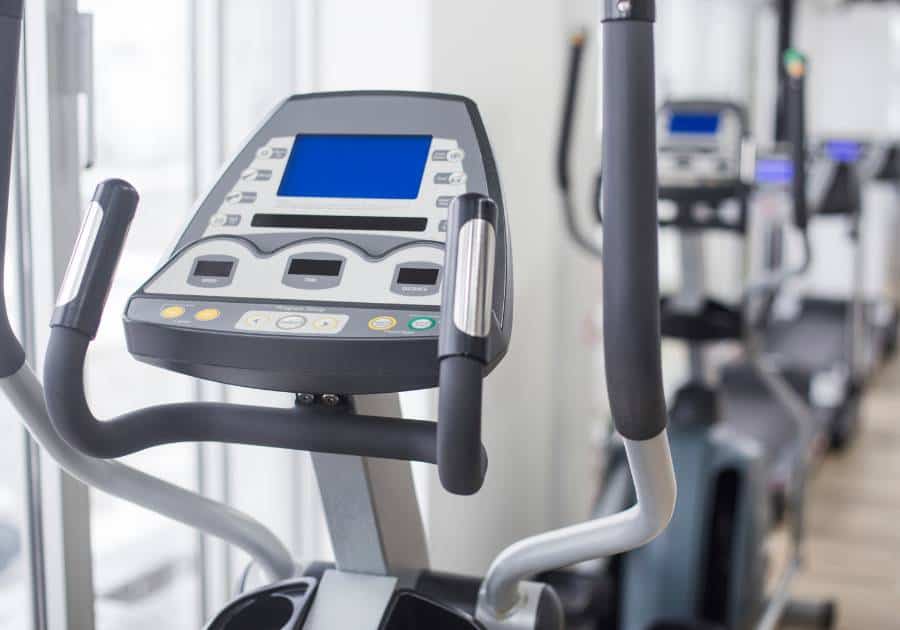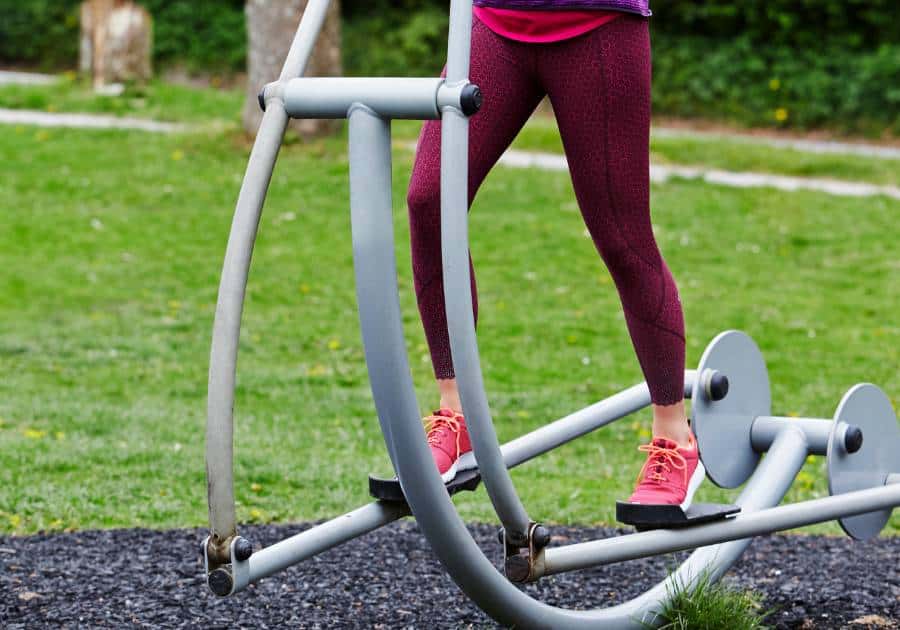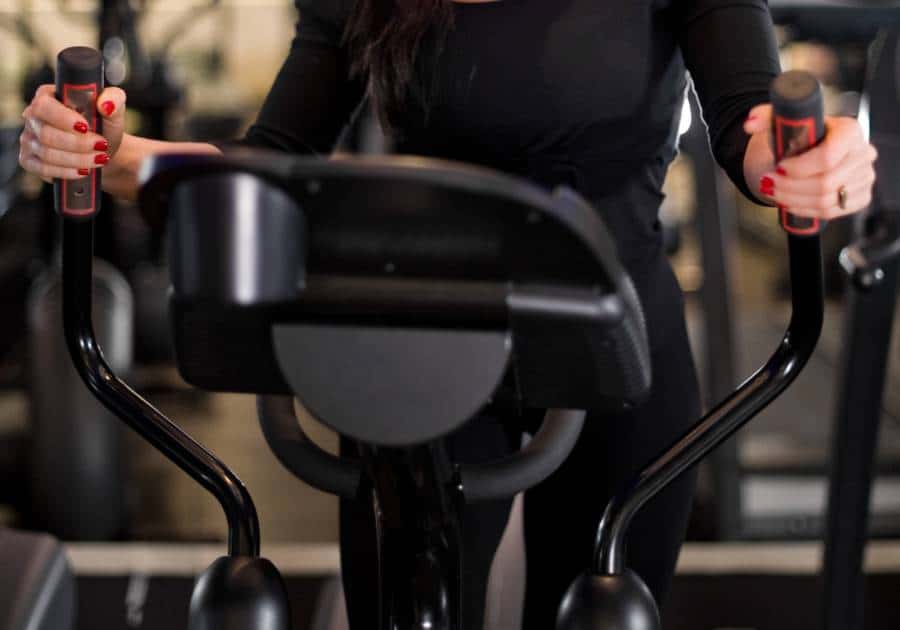How Many Minutes On Cross Trainer To Lose Weight? Is 10 Minutes or 30 Minutes Enough?
Are you looking to lose weight but don’t have the time or commitment to go to the gym? Have you heard of the cross trainer and wonder how it can help with your weight loss goals? Every minute counts when it comes to burning calories and losing weight, so how many minutes on the cross trainer should you do in order to get results? In this article, we’ll look at how many minutes on a cross trainer can help you reach your weight loss goals.
The cross trainer is a great way for people who are short on time to get in a good workout. With its low-impact nature and range of motion, it’s an ideal option for those who want to work on their cardiovascular health without putting too much strain on their body. Plus, depending on the intensity of your workout, it can be just as effective as other exercise machines when it comes to burning calories and fat.
So if you’re looking for an easy way to get active and lose some weight, then the cross trainer could be a great addition to your routine. We’ll take a look at what kind of workouts you should do on it, as well as how long each session should last in order to optimize your weight loss journey. Keep reading to find out more!
Benefits Of Cross Training
Cross training is a great way to get your heart pumping and muscles moving. It’s like taking a trip on a fitness roller coaster – high energy, engaging and full of thrills! With its versatile range of exercises, it can provide an all-in-one workout that covers cardio, strength, and flexibility. The cross trainer is the perfect tool for a dynamic workout that challenges your body and keeps you motivated. It’s like having a personal trainer at home! You can adjust the speed and resistance to tailor the workout to your needs and preferences. Plus, it’s low impact so it won’t put strain on your joints or muscles. In short, using a cross trainer can be an effective way to burn calories and reach your fitness goals.
Guidelines For Weight Loss
When aiming to lose weight, the most important factor is consistency. The best way to ensure this is to create a routine that includes both cardio and strength-training exercises. Cardio exercise, such as running or jumping rope, should be done for at least 30 minutes a day. Strength training should also be done two to three times a week for 20 minutes each session.
Cross trainers can be an effective tool for weight loss when used correctly. Aim to spend at least 20 minutes on the cross trainer every day, with intervals of high intensity and low intensity throughout your workout. Increase the intensity of your workout as you become more comfortable with the machine and your fitness levels improve. This will help you burn more calories in a shorter amount of time and achieve your weight loss goals faster.
By following these guidelines, you can create an effective workout plan that will allow you to reach your weight loss goals in a safe and healthy manner. Next we’ll discuss the impact of frequency and intensity on cross training workouts.
Impact Of Frequency And Intensity
Surprisingly, the amount of time spent on a cross trainer to lose weight is not as important as the intensity and frequency. It might seem counterintuitive, but it is true; if you want to get the most out of your workout and maximize weight loss, then you need to focus on two key things:
- Intensity: The intensity of your workout should be high enough that you are pushing yourself, but not so high that you risk injury or become overly fatigued.
- Frequency: Aim for at least three days per week, but more is better.
- Variety: Incorporate different exercises into your routine to keep it fresh and challenging.
- Rest: Make sure to give yourself adequate recovery time between workouts.
It is important to remember that quality matters more than quantity when it comes to weight loss. Doing more does not always mean better results; instead, focus on doing things properly and consistently for maximum benefit.
Frequently Asked Questions
Is Cross Trainer Suitable For People With Joint Problems?
When considering whether the cross trainer is suitable for people with joint problems, it’s important to take into account several factors. Firstly, the type of exercise that a cross trainer offers is low impact and therefore places less strain on joints compared to running or jogging.
Furthermore, there are a number of other benefits that can be gained from using a cross trainer:
- It helps to strengthen lower body muscles without putting too much pressure on joints;
- You can adjust the resistance level to suit your own needs;
- It provides an aerobic workout which helps with weight loss;
- It is also very effective at increasing cardiovascular fitness levels.
For those who have joint problems, using a cross trainer can provide them with an excellent way of exercising without causing any further damage or discomfort. The ability to adjust the resistance level means that it can be tailored and adapted to each individual’s needs and abilities, ensuring that they get the most out of their workouts without risking any further harm or injury to their joints.
How Does Cross Trainer Compare To Other Forms Of Exercise For Weight Loss?
When it comes to exercising for weight loss, cross trainers offer a unique combination of benefits that can be hard to come by from other forms of exercise. Cross trainers are low-impact and gentle on the joints, making them ideal for people with joint problems or those who prefer a more comfortable workout. They also offer an excellent range of motion, helping to target multiple muscle groups at once and maximize the effectiveness of each workout session.
But how does cross trainer compare to other forms of exercise when it comes to weight loss? The key is in the intensity – cross trainers provide a high-intensity cardio workout that increases your metabolism and burns more calories than steady-state exercises like jogging or walking. As well as this, they also offer a varied routine which helps keep boredom at bay and ensure you’re pushing yourself harder each time you use it.
Cross training is an effective strategy for losing weight as long as you stay consistent with your workouts and push yourself hard enough each time. You should aim for at least 30 minutes per session, three times per week in order to see results over time – although some people may opt for shorter sessions more often depending on their goals and current fitness level.
How Quickly Will I See Results With Cross Training?
When it comes to losing weight, cross training is an excellent exercise option. Whether you’re a beginner or more experienced in fitness, cross training can help you achieve your weight loss goals. But how quickly will you see results with cross training?
The answer depends on a variety of factors, such as the frequency and intensity of your workouts, as well as your diet and lifestyle. If you are consistent in your efforts, exercising regularly at a moderate to high intensity level while also eating healthily, then you should start seeing results relatively quickly. It’s important to keep in mind that any kind of exercise takes dedication and consistency in order for it to be effective. With cross training specifically, combining different types of activities into one workout can help speed up the weight loss process.
So if you’re looking for quick results from cross training, make sure to stick to a regular routine and push yourself during each session. Eating healthy foods and being mindful of what goes into your body is also essential for achieving desired results from this type of exercise.
Are There Any Health Risks Associated With Cross Training?
Cross training is a popular form of exercise for those looking to improve their overall fitness and health. It combines different types of exercise, such as running, cycling, and weightlifting, to provide an effective workout. But are there any health risks associated with this type of exercise?
The good news is that cross training can be done safely and effectively when appropriate precautions are taken. It is important to ensure that you are using the correct technique and form when performing each type of exercise in order to prevent injury. Additionally, it is important to stay hydrated during your workouts and to listen to your body if anything feels uncomfortable or unnatural.
In addition, it is recommended that you consult with a doctor or other medical professional before beginning a new type of exercise routine to make sure it is suitable for you. This will help ensure that you get the most out of your workouts and avoid potential injuries or other health problems.
What Type Of Diet Should I Follow To Maximize My Weight Loss Results?
When it comes to losing weight, diet is just as important as exercise. What type of diet should you follow to maximize your weight loss results? The answer depends on your individual goals and dietary needs.
To achieve maximum results, it’s important to create a healthy eating plan that works for you. This could mean reducing your intake of processed foods, cutting back on sugar and saturated fats, or increasing your intake of lean proteins and fresh fruits and vegetables. It’s also important to ensure that you’re getting enough vitamins and minerals in your diet, so if necessary, supplementing with multivitamins may be beneficial. Additionally, aim for portion control by reading food labels or using measuring cups or spoons when needed.
Creating a balanced diet along with regular exercise can help you not only reach but maintain a healthy weight over time. With the right combination of eating habits and physical activity, you’ll be well on your way to achieving lasting success in achieving your health goals.
Conclusion
Cross trainer is an excellent form of exercise for weight loss. It can be used safely by people with joint problems and is a great alternative to other forms of exercise. Results are achieved quickly, so you don’t have to wait long to start seeing results. However, it’s important to remember that diet also plays a large role in achieving your weight loss goals. To maximize your results, combine cross training with healthy eating habits.
The amount of time spent on the cross trainer will depend on individual fitness levels and goals. Generally speaking, 30 minutes of moderate intensity cross training 3-5 times per week should help you lose weight over time. If you want faster results, increase the intensity or duration of your workout sessions.
Overall, cross training can be an effective way to lose weight if done correctly and combined with a healthy diet. Just make sure to listen to your body, take breaks when necessary and adjust the intensity or duration depending on how you’re feeling. With dedication and consistency, you’ll soon see the results from your hard work!
